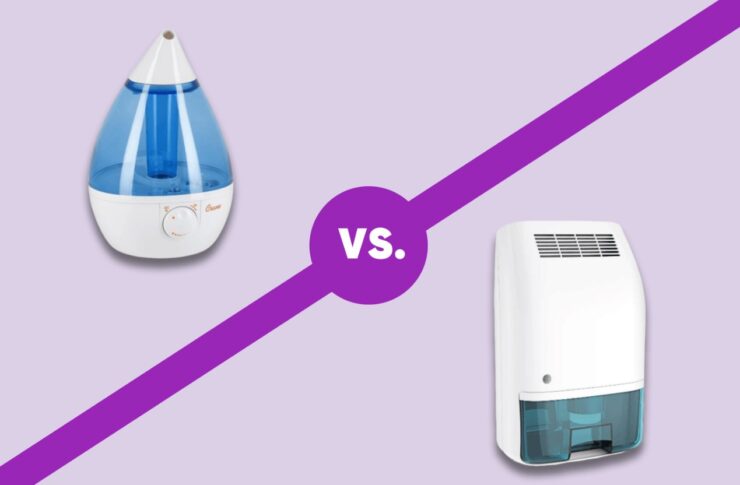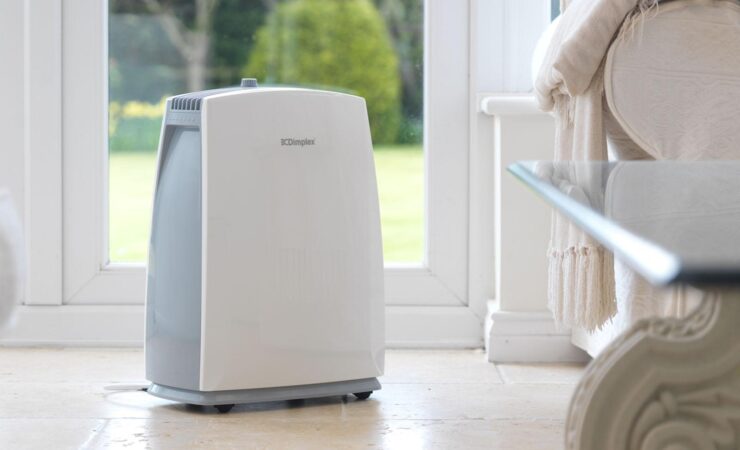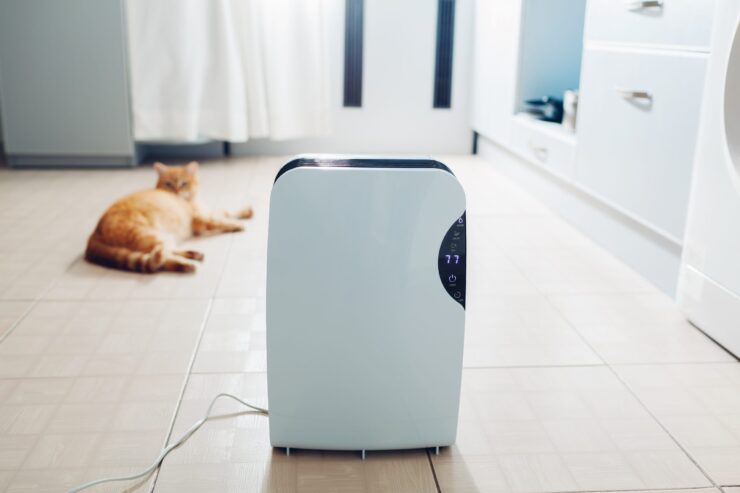Which is the best machine for keeping your indoor space or home humid level at the ideal level. Humidifier vs Dehumidifier? A tricky question that perplexes most homeowners looking to acquire either of these machines.
You at the best place since this post will take you into detail regarding a humidifier or a dehumidifier. We have extensively done thorough research to provide this informative masterpiece. Shun away from the average researched post by seeking info provided in this post.
One thing certain, both of these two machines play different roles, and it’s wise to get an understanding of their functionality. A humidifier helps to add more moisture to your home or indoor space. Humidifies are suited for cold and winter periods.
On the side, a dehumidifier helps to lessen the moisture in indoor spaces and homes. Dehumidifies are simple to install and have few maintenance practices. As such, it’s paramount to get this machine in case the humid level surpasses the 50% range.
Now let’s look at the details about humidifiers and dehumidifiers. We thought you should know!
Humidifier vs Dehumidifier: All You Need to Know

What is A Humidifier?
A humidifier helps to moisture the air around houses and is most helpful during the cold and winter periods. Dry indoors air condition can dry our eyes, lips, and skin. Indoor spaces should averagely have about 35% to 50% humidity levels.
A special and helpful weather accessory is the hygrometer. You can conveniently use it to measure the humidity level in your homes. A level below 30% calls for the need to have a humidifier.
After you’ve installed the humidifier, it’s wise to always check the level of humidity. Anything above 50% leads to bacteria and fungi infestation.
If the humidity level surpasses the 65% mark, window panes usually condense and can become breeding grounds for bacteria. All in all, humidifiers play a key role in maintaining an optimal level of humidity in our homes.
How Does a Humidifier Work?
The humidifier’s core function is to add moisture in enclosed spaces like homes. Dry air can cause ailments like Flu and also irritate our eyes. As such, it’s wise to install a humidifier to keep the humidity levels at an optimal level.
Since there are various kinds of humidifiers, we are going to discuss the general process that these machines use to supply vital moisture. Most commonly found humidifiers utilize a specially made fan to blow air over a wet material.
An absorbent material like a wick helps to release moisture to the surrounding indoor environment. Importantly, ensure you use treated water to avoid harmful toxins from affecting your respiratory system.
Humidifiers create a cool sensation from the moisture released hence helping to maintain optimal humidity levels. Also, humidifiers come in different forms, but the latest models usually are auto and can adjust according to the humid level.
If the humid level, go less than 30%, then it’s crucial to get a humidifier. Best humid levels for indoor spaces should be between 30 to 50%, and humidifies help to maintain this level of humidity.
What is A Dehumidifier?
A dehumidifier is a special machine that helps to absorb excess moisture in the air, especially for indoor based spaces. Most homeowners faced with excess moisture ought to have this machine in their apartments.
When the humid level surpasses the 50% mark, dehumidifiers are great tools to counteract rogue moisture levels. Humidifiers work by drying out warm air in indoor set-ups before condensing and releasing water droplets to the storage area.
Dehumidifiers are great for basement spaces and homes where mold and dumpiness are prevalent. Do your clothes smell dump, or you have been faced with a running nose? A dehumidifier will help to maintain the right humid levels that are ideal for healthy living.
Dehumidifiers are vital machines for helping curb dump air and thus maintain an optimal level of moisture. Also, they improve our health, which is the best thing about these gadgets.
How does Dehumidifier work?
A dehumidifier is an important home gadget that helps to lower the humidity level in case it surpasses 50%. To work best, a dehumidifier draws warm air to the coil area through a special fan. As the warm air passes through the coils of the machine, it contracts. Contraction of warm air makes it possible for condensation to occur inside the dehumidifier machine.
Condensation helps to ensure that water droplets are formed. A storage tank that is installed in the dehumidifier machine store where these water droplets concentrate. Much cooler air is released from the other side of the dehumidifier machine.
A good and well-functioning dehumidifier should be able to lessen the humidity to around 30% to 50%. Modern dehumidifiers usually have a meter that measures the level of humidity in homes. In case the humidity level surpasses the recommended % level, the dehumidifier will automatically work.
Operating a dehumidifier is not that cumbersome, and you can achieve it on your own. In case you encounter any difficulties, look for the info provided in the user manual to install and operate it better.
Different Types & Variations: Humidifier vs Dehumidifier

Types of Humidifiers
Humidifiers are important tools for ensuring houses and spaces have the right humidity levels. Ideal for use during cold and winter conditions. Basically, there are different types of humidifiers, which are listed and detailed below.
Ultrasonic or Warm Mist Type
When working, they use a metal-based diaphragm, which uses an ultrasonic frequency to vibrate. Importantly, it releases a mist in the air, which evaporates consequently before reaching the ground and thus humidifying the space area.
A silent humidifier option is great and works by producing a cool sensational fog. A good option when used as a whole-home affiliated humidifier.
Cool-Mist Type
Functions by releasing cool water in vapor form in the surrounding air. It is suited for warm weather conditions or during the summer periods.
Cool mist humidifiers are prone to bacterial infestation, are quite noisy, and are affected by mineral dust. Away from those flaws, they are cost-effective, easy to clean, and, most importantly, good for use in areas where there are pets.
Evaporative Type
Evaporative humidifiers use a fan to circulate humidity via a moist filter situated at the base of the machine. Evaporating water is released as mint or spray, thus creating humid water.
An Evaporative humidifier is best when used in spaces where pets and kids are present since they produce less heat.
A good thing is that they have low maintenance practices, are cheap and easy to install. Also, they are automated and can adjust and re-adjust humidity levels conveniently.
Vaporizer Type
Vaporizer humidifiers are cheap, offer a cool mint, and provide warm mist. All these benefits are realized by people purchasing vaporizer based humidifier.
You can choose from warm to cool mint, and if you are suffering from a Flu, inhalant properties can be added. When working, they release visible steam onto the air and operate quietly plus create less accumulation of dust.
Types of Dehumidifier
Dehumidifiers come in different forms, and these are notable types of dehumidifiers:
Electronic Dehumidifier
A dehumidifier type that utilizes a heat pump to create a much cooler surface. Creating this surface helps to extract vapor in the air. Also, it’s not noisy but is low when it comes to efficiency and thus suitable for small tasks.
Makeshift Dehumidifier
Operate similarly to the mechanical dehumidifiers and can be window units or stand-up. Work by adding heat and also can release condensed air out of the room.
Ionic membrane Dehumidifier
Whether in liquid or water form, it’s possible to get rid of water molecules in the air. Ionic membrane work by removing water molecules and adding water molecules in an enclosed environment. Suited for water filtering processes, the chemical engineering field, and others.
Mechanical Dehumidifier
A very common dehumidifier type that functions by utilizing a small fan to pull moist air through a coil. On the coil, condensation occurs, and water goes to a collecting area.
A mechanical dehumidifier is suited for air temperature that ranges around 20 degrees Celsius and a humidity of 45% plus.
Absorption Dehumidifier
A type of dehumidifier that absorbs moisture from the air efficiently. When working, a desiccant is made to rotate via a belt. At the end of this machine, there is a heated system that draws water from the rotating belt.
Suited for locations where high humidity and low temperatures are prevalent. Also, it can operate well when used in industrial works where it’s tasked to reduce humidity to 30% or 50%.
All these machines are great when it comes to reducing excess humid conditions. Also, they ensure your home has a lively yet good feeling factor. Wow, your friends by installing one.
Difference Between Humidifier and Dehumidifier

A humidifier and dehumidifier work differently and are suited for different applicability. As such, it’s wise to distinguish them to avoid buying the wrong one. Here are some notable differences that distinguish a humidifier and a dehumidifier:
Mold Problem
A humidifier and dehumidifier are great at controlling the level of moisture in spaces. At the same time, these machines don’t work the same and are suited for different humidity conditions.
Mold usually thrives well in a space where there is excess moisture. To avoid this menace, you need to drastically reduce the level of moisture.
A good machine that can help to prevent or curb mold infestation is the use of a dehumidifier. A humidifier would not be best in curbing mold infestation around homes and other indoor set-ups.
Basement Spaces
Basements lack enough sunlight and hence have low temperatures and high humidity levels. Mold for sure likes thriving in these conditions. A good machine for installing in the basement area is a dehumidifier.
A dehumidifier reduces the level of moisture, and it’s very rare to find a humidifier being used in basements.
Winter Period
During the winter season, the air is usually dry, and installing a humidifier is the right thing to do. Humidification process helps to increase the humidity level to about 30% especially during the winter season. Also humidifying during the winter season helps to curb rising viruses like Flu.
Airborne diseases thrive well during the winter period and installing a humidifier can save you a lot. Also, a humidifier helps to improve your skin tone and most importantly protect furniture.
A dehumidifier is concerned with sucking excess moisture and installing it during the winter season is not recommended. A humidifier is a perfect machine for use during the winter period.
Cold Environment
During the cold season, both of these two machines play diverse health benefits. A humidifier helps to increase moisture and thus treat nasal conditions that affect your chest as a result of cold weather conditions.
A humidifier is suited for many humid works by adding moisture in cold conditions thus helping treat conditions like asthma.
Both are great for treating different health conditions during cold weather conditions. All in all, during the cold periods, it’s wise to employ a humidifier since it adds more moisture.
Price Ranges of Humidifier and Dehumidifier
Since there are different models of humidifiers and dehumidifiers, the price range can’t be the same. Also, the price range of these two machines depends on the aspects and the place where you buy one.
A great yet versatile humidifier should cost an averagely USD 1500 – 2000 which is reasonable pricing. Getting this machine will make your home feel better and have a great coolant sensation.
However, a good and effective dehumidifier should cost around USD 1000 – 2000. An affordable price tag since you are going to acquire an original one.
All in all, the pricing of these machines is quite affordable concerning the benefits realized. A good place to buy one is the Amazon website or legalized dealers of these two types of machines.
Maintenance tips of Humidifiers and Dehumidifiers
Whether it’s a humidifier or dehumidifier, maintaining these machines is paramount. Here are important tips on how to maintain them.
Dehumidifier maintenance practices
- During winter periods, always check the coil area and see if it’s affected by frost infestation. Frost infestation usually reduces the overall efficiency of a dehumidifier.
- Ensure that you thoroughly clean the reservoir and bucket regularly. Also, don’t let water stay for more than two days. Water that stays for longer than this time frame makes it possible for bacteria and mold to thrive.
- Install a dehumidifier machine correctly to avoid inefficiency associated with the incorrect set-up which can affect their overall functionality.
- Every week ensure you scrutinize the machine to check if there are any damages and potential bacterial infestation. Doing so will protect your family and save huge costs associated with consulting a doctor.
Humidifier Maintenance Practices
- Ensure you install a humidifier in a dry location. A dry place is a right place to help detect leaks and potential mold infestation around the set-up area.
- Only use distilled water on a humidifier. Use of distilled water ensures that mold and bacteria infestation in filters, reservoirs, and tanks are avoided.
- After you’ve cleaned the reservoir and water tank, rinse well to ensure no harmful chemicals are left behind. Harmful chemicals when release can harm human health.
- Water tank and the reservoir should be cleaned regularly and in a thorough manner. Water should be changed at least thrice per week to ensure that bacteria and mold infestation don’t occur.
- Always check the level of water and ensure that the container isn’t filled fully. A full container will lead to the shutdown of the whole machine. Also, check to ensure all components are free-flowing and work at the best level. Failure to do will lead to an obsolete humidifier.
Maintaining a humidifier or dehumidifier is not costly and it’s a task you can conveniently handle on your own. If you are faced with difficulties on how to better maintain these machines, it’s wise to consult with friends who own one. Also, you can hire a professional operator to check if it failed.
Conclusion
By now, it’s our hope you have been enlightened about the key differences between humidifier vs dehumidifier. Both of these play different roles in homes and indoor spaces and their benefits are many.
From curbing common respiratory ailments to having a serene environment, they are a must to have. Having one at your home will make life much easy and are especially suited for environs where pets and kids are present.
You can use each one of these machines conveniently since there is a user manual provided when purchasing. A user manual reveals crucial info on how to better install and maintain them.
To get the best price, compare these gadgets from different shop owners to get an affordable price. If you encounter any helpful info we might have left in this post by mistake, please include it in the review section.
